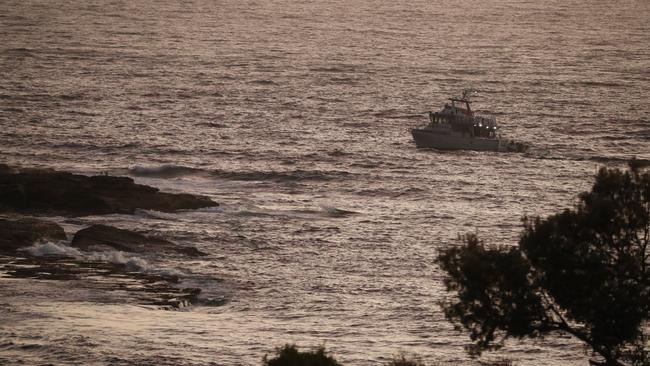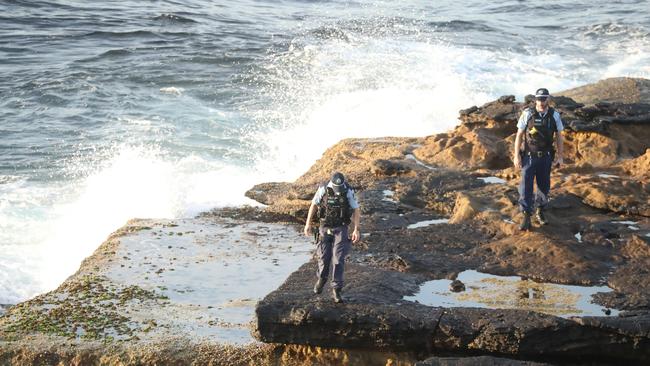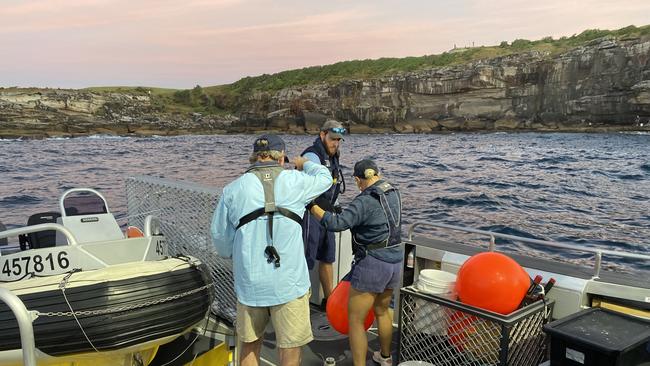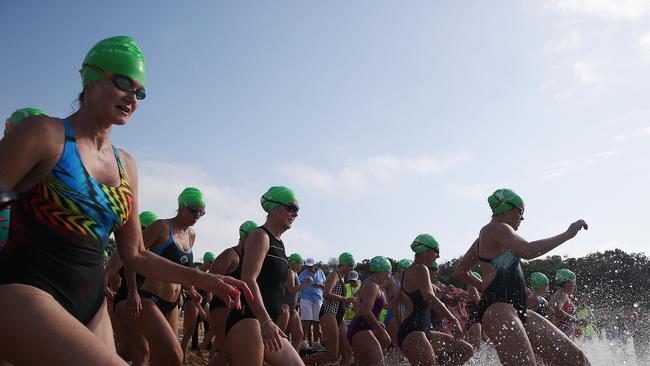Little Bay fatal shark attack: Marine biologist Iain Suthers speaks on circumstances surrounding incident
A marine biologist has revealed why there could be more sharks in the water near the Little Bay shoreline and what could be done to prevent a similar “freak” incident happening again.
NSW
Don't miss out on the headlines from NSW. Followed categories will be added to My News.
A marine expert has shone a light on the circumstances which may have contributed to increased shark activity in Little Bay, the site of Sydney’s first fatal shark attack in 60 years.
A swimmer was killed just north of the beach on Wednesday, with fisherman finding human remains almost an hour-and-a-half after a fisherman first reported a shark had attacked someone and pulled them under the water.


Iain Suthers, a biological, earth and environmental science professor at UNSW, said sharks tend to be in cooler parts of the Tasman Sea but right now the East Australian Current is particularly warm.
“So it’s very warm out there now, about 30 km off shore the surface water of the east Australian coast is about 27C,” he said.
“Its movement drives cold water up into the coastal waters off Sydney, so the coastal waters can be as low as 18C, so the shark would be moving into that colder water.
“The cold water has lots of plankton in it which feed small fish, which feed bigger fish, which attract the sharks and sometimes the great white shark can bump into a human being.”
Professor Suthers presumed the shark responsible for the attack was a great white because they are the only ones that would create such horrible injuries.

He said bull sharks prefer estuaries and tend to mainly eat fish and that tiger sharks are usually found in more tropical waters. Great whites, however, feed on fish and mammals – so they do eat and chase warm blooded animals.
Keen to emphasise what a freak accident Wednesday’s tragedy was, Professor Suthers stressed that a fatal shark attack is at least 1000 times rarer than dying in a car crash and one million times rarer than a bushfire death.
But he said understanding the way the ocean and its creatures move could potentially make waters safer. He suggested this could be in the form of an oceanographic forecast – similarly to a weather or bushfire forecast.
“We need to understand the movement of the sharks, how they respond to the water and remember that we are just swimming in their environment, and so … it’s important to understand the oceanographic weather,” he said.
“This oceanographic condition [East Australian Current] happens all the time and so it’s just the subtle difference in the temperature gradient, and the time of day perhaps, and the occurrence of other fish, possibly penguins,” he said.

Even with an oceanographic forecast, which would be helpful, Professor Suthers noted there would be difficulties in knowing the direct correlation with an increase in shark attacks because “it would be a forecast dealing with really, really rare events.”
“It’s such a rare occurrence that I have no idea why it would want to attack the human,” he said.
“The next day it might be completely different. It was possibly surprising itself. There is no known scientific reason for why this sudden attack occurred out of nowhere – it’s very strange.”
Professor Suthers warned there were ways swimmers and other water users could try to prevent shark attacks from occurring – though they’re not bulletproof.
“The only thing we can do is remember February and March are the warmest times of the year in the ocean and when sharks are the most active,” he said.
“During those months, definitely don’t swim at dawn or dusk, when there is low visibility, or after heavy rain. Swim in groups if you can.
“At this time of year, Bull sharks come down from the north and are active in the harbour.
But Professor Suthers said that ultimately, people “shouldn’t be any more worried or concerned” about continuing to enjoy the water.
“Thousands of people swim every week in the ocean and they should continue to swim with confidence,” he said.
MALABAR MAGIC OCEAN SWIM CANCELLED

The longstanding swim, held at Sydney’s Malabar Beach each February, is named after a six-time Olympic medalist Murray Rose.
The event sees about 1500 participants annually, who swim one to five kilometres either individually or a team.
Randwick City Council mayor Dylan Parker said he supported the decision of the organisers, which was done in in respect of the shark victim’s family.
“Council has had a strong partnership with the organisers and we support the ongoing operation of the swim, but at this time, we think it’s the right call,” he said.
More Coverage
Originally published as Little Bay fatal shark attack: Marine biologist Iain Suthers speaks on circumstances surrounding incident





